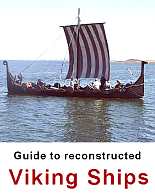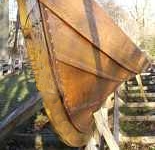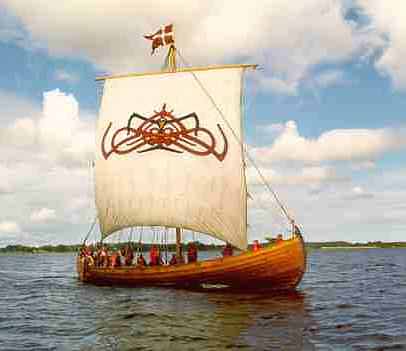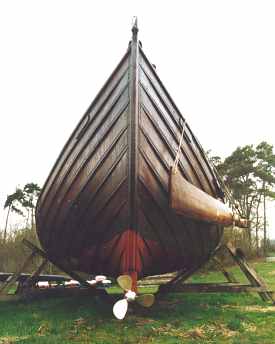Nidhug |
||||||||
|
|
Nidhug is a true excursion ship designed for hiring, and therefor equipped with commodities that would cause much amazement among the Vikings of a thousand years ago.
The Maritime Experimental Centre stresses the fact that their ships are not museum replicas, but merely ships built according to Viking Age traditions. Thus, modern machinery was employed during construction, and experiments are being conducted on supplementary sails (studding sail) in an attempt to increase speed. Nidhug is a suitable ship for the inner European waters. It has visited many Danish islands, and has also been to Poland. See also the sister ship Røde Orm
|
|
||||||




 The ship, among other
things, has a 40 Hp Perkin diesel engine, and a 200 liter fuel tank. The
modifications were made to make it possible to keep the timetables while
hired, and in bad weather. Nidhug was inspired by the Norwegian Gokstad
ship.
The ship, among other
things, has a 40 Hp Perkin diesel engine, and a 200 liter fuel tank. The
modifications were made to make it possible to keep the timetables while
hired, and in bad weather. Nidhug was inspired by the Norwegian Gokstad
ship.